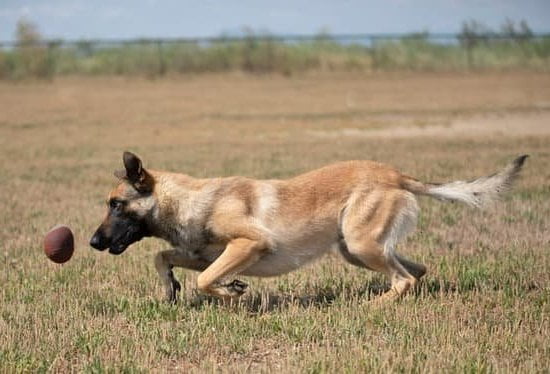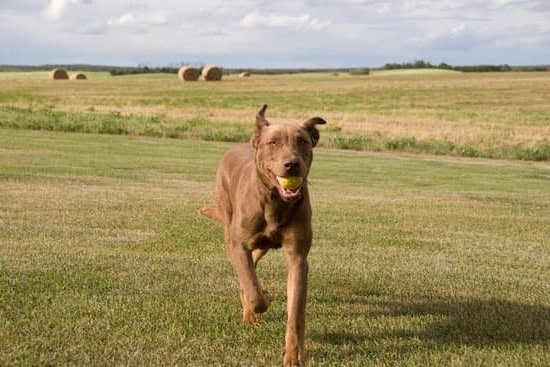Are you struggling to train your furry friend? Some breeds are notoriously stubborn, independent, and energetic, making them the hardest dogs to train. Understanding the challenges of training these dog breeds is essential for any pet owner.
In this article, we will explore the characteristics of hard-to-train dogs and discuss specific breeds that are notorious for their difficulty in training. We will also delve into the role of genetics in a dog’s trainability and provide tips on training techniques, early socialization, and common mistakes to avoid when training challenging dogs.
Training a dog can be a rewarding experience, but it can also be incredibly challenging, especially when dealing with certain breeds. Characteristics such as stubbornness, independence, and high energy levels can make the training process more difficult for both owners and their pets. It’s crucial to understand the unique needs of these breeds to effectively train them and foster a strong bond.
Some dog breeds are particularly known for their difficulty in training. Dalmatians, Siberian Huskies, and Beagles are among those that often present challenges during the training process. These breeds have specific traits and instincts that require a tailored approach to training. Understanding their genetic predispositions is key to developing successful training strategies that cater to their individual needs.
Characteristics of Hard-to-Train Dogs
Training a dog can be a rewarding experience, but some breeds are known to be more challenging than others. The hardest dogs to train often possess certain characteristics that make them less responsive to traditional training methods. Stubbornness, independence, and high energy levels are some of the key traits that can make training difficult for owners.
Firstly, stubborn breeds such as Dalmatians are known for their strong-willed nature, which can make them resistant to following commands or learning new behaviors. Additionally, independent breeds like Siberian Huskies may have a tendency to prioritize their own agenda over obedience training.
These dogs often require a different approach and more patience from their owners. Furthermore, high-energy dogs like Beagles can become easily distracted during training sessions, making it more challenging to keep their focus and maintain consistent progress.
It’s important for owners to understand these characteristics in order to better tailor their training techniques to their dog’s specific needs. Patience, consistency, and positive reinforcement are essential when working with the hardest dogs to train in order to achieve successful results and build a strong bond with your pet. By recognizing these traits and adjusting your approach accordingly, you can set the stage for a more successful training experience with your dog.
| Characteristic | Example Breeds |
|---|---|
| Stubbornness | Dalmatians |
| Independence | Siberian Huskies |
| High Energy Levels | Beagles |
Breeds That Are Notoriously Difficult to Train
When it comes to training dogs, some breeds are known for being more challenging than others. Dalmatians, Siberian Huskies, and Beagles are three breeds that are notoriously difficult to train, often due to their independent nature and high energy levels. Understanding the characteristics of these breeds can help owners better navigate the training process and set realistic expectations.
Stubbornness and Independence
Dalmatians, Siberian Huskies, and Beagles are all known for their independent streaks, which can make them resistant to following commands or engaging in training exercises. These breeds were originally bred for specific purposes, such as hunting or working independently, which has resulted in strong instincts that can be hard to override with traditional training methods.
High Energy Levels
Another common characteristic among these three breeds is their high energy levels. Dalmatians, Siberian Huskies, and Beagles require plenty of physical exercise and mental stimulation to prevent boredom and destructive behaviors. Without adequate outlets for their energy, they may be less responsive to training efforts.
Genetic Predispositions
The genetics of these breeds also play a significant role in their trainability. Dalmatians have a history of being carriage dogs with an instinct to run alongside horses, while Siberian Huskies were bred for endurance and sled pulling. Beagles have been traditionally used as scent hounds for hunting small game. Understanding these genetic predispositions can help owners tailor their training approach to better suit the needs of these breeds.
By recognizing the unique characteristics of Dalmatians, Siberian Huskies, and Beagles, owners can approach their training with patience and understanding, utilizing techniques that are tailored to the specific needs of these challenging breeds.
The Role of Genetics in a Dog’s Trainability
When it comes to training a dog, genetics play a significant role in determining their trainability. Certain breeds have genetic predispositions and instincts that make them more challenging to train compared to others. Understanding these genetic factors can help owners and trainers approach training with the right knowledge and expectations.
Genetic Predispositions
Some dog breeds have been selectively bred for specific tasks or characteristics that may not necessarily align with the typical obedience training. For example, some herding breeds like Border Collies and Australian Shepherds have strong instincts to control the movement of other animals, which can manifest as stubbornness or insistence on doing things their way during training.
Similarly, hunting breeds like Beagles may be easily distracted by scents due to their strong prey drive, making it challenging to keep their attention during training sessions.
Breed Instincts
Each breed has its own set of instincts that can greatly affect their trainability. For instance, Siberian Huskies are known for their independent nature and high energy levels, traits that were essential for their original purpose as sled dogs in harsh Arctic conditions.
These instincts can make them resistant to traditional obedience training methods that rely on close engagement and compliance. Dalmatians, originally carriage dogs with a lot of energy, also exhibit independence and stubbornness, making them one of the hardest dogs to train.
Understanding the genetic predispositions and breed instincts of a dog is crucial when planning a training program. It allows owners and trainers to tailor their approach based on the specific needs and challenges posed by each breed, ultimately leading to more effective and successful training outcomes for even the hardest dogs to train.
Training Techniques for Challenging Dogs
When it comes to training challenging dogs, such as Dalmatians, Siberian Huskies, and Beagles, it’s crucial to approach the process with the right techniques. These breeds are often characterized by their stubbornness, independence, and high energy levels, making traditional obedience training methods less effective. However, with the right approach, it is possible to successfully train even the hardest dogs to train.
Patience is key when dealing with difficult breeds. It’s important to understand that these dogs may take longer to grasp commands and may require more time and repetition before they fully understand what is expected of them. Consistency is also crucial – using the same commands and training methods consistently will help these dogs understand what is required of them.
In addition, positive reinforcement is essential when training challenging dogs. Rewarding good behavior with treats or praise will encourage them to continue displaying those desired behaviors.
Here are some effective training techniques for challenging dogs:
- Use positive reinforcement such as treats or praise when they exhibit desired behaviors
- Be patient and persistent in teaching commands and ensure consistent use of chosen methods
- Engage them in mental stimulation activities such as puzzle toys or interactive games to keep their minds occupied
By understanding the unique needs of hard-to-train breeds and utilizing these positive techniques for guidance and motivation, even the most challenging dogs can become well-behaved companions.
Importance of Early Socialization and Obedience Training
Early socialization and obedience training are crucial for all dogs, but they are especially important for the hardest dogs to train. These breeds, such as Dalmatians, Siberian Huskies, and Beagles, often have independent and stubborn personalities, which can make training more challenging. However, with the right approach, it is possible to set a strong foundation for better behavior in these dogs.
One of the key techniques for training challenging dogs is early socialization. This involves exposing the dog to various people, animals, environments, and experiences from a young age. By doing so, you can help your dog become more adaptable and less fearful or aggressive towards new stimuli. Additionally, early socialization can prevent behavior problems from developing as the dog matures.
In addition to socialization, obedience training is essential for hard-to-train breeds. Teaching basic commands such as sit, stay, come, and leash walking not only promotes good behavior but also strengthens the bond between you and your dog. Consistency is key when it comes to obedience training – practice regularly in different environments and use positive reinforcement techniques such as treats or praise when your dog follows a command correctly.
- Provide plenty of positive experiences during their early development
- Introduce them to a wide range of people and other pets
- Avoid punishing them for fearful or anxious behavior
Common Mistakes to Avoid When Training Difficult Dogs
Training a difficult dog can be a challenging and sometimes frustrating experience. However, it is important to avoid common mistakes that could potentially make the training process even more difficult. One of the most crucial mistakes to avoid is the lack of consistency in training.
Inconsistency can confuse a dog and make it difficult for them to understand what is expected of them, leading to slow progress or no progress at all. It is essential for dog owners to establish clear rules and boundaries and consistently enforce them.
Another mistake to avoid when training difficult dogs is punishment-based training. Using punishment as a primary means of disciplining a dog can lead to fear, anxiety, and even aggression. Instead, positive reinforcement techniques should be prioritized. Rewarding good behavior with treats, praise, or toys can be much more effective in shaping a dog’s behavior than using punitive methods.
Furthermore, having unrealistic expectations of a difficult dog’s trainability can also hinder the training process. It is important for dog owners to understand that certain breeds may naturally be more challenging to train due to their stubbornness, independence, or high energy levels. Accepting these traits and approaching the training process with patience and understanding can make a significant difference in achieving success.
| Common Mistake | Impact |
|---|---|
| Lack of Consistency | Confusion for the dog and slow progress |
| Punishment-Based Training | Fear, anxiety, and potential aggression in the dog |
| Unrealistic Expectations | Frustration and lack of progress in training |
Avoiding these common mistakes while training difficult dogs can help create a more positive and effective learning environment for both the owner and their canine companion.
Seeking Professional Help
When faced with the challenge of training a difficult dog, it is important to consider seeking professional help from a dog trainer or behaviorist. Certain breeds, such as Dalmatians, Siberian Huskies, and Beagles, are notoriously known for being some of the hardest dogs to train.
Their stubbornness, independence, and high energy levels can make traditional training methods ineffective and frustrating for owners. In these cases, seeking the expertise of a professional can make a significant difference in addressing behavioral issues and developing a positive training plan.
Professional dog trainers and behaviorists have the knowledge and experience to understand the unique needs of difficult dog breeds. They can tailor training techniques to suit individual personalities and address specific challenges that may arise during the training process. Additionally, they can provide guidance on how to modify the training approach based on a dog’s breed instincts and genetic predispositions that may impact their trainability.
One of the key benefits of hiring a professional is their ability to provide personalized support and guidance for both the dog and its owner. They can offer insight into effective training techniques, such as positive reinforcement and consistency, while also helping owners understand the importance of patience and setting realistic expectations. Ultimately, seeking professional help can lead to better communication between dogs and their owners, resulting in improved behavior and a stronger bond between them.
Conclusion
In conclusion, training hard-to-train dogs may be a challenging task, but the rewards are well worth the effort. While breeds like Dalmatians, Siberian Huskies, and Beagles may present unique difficulties due to their stubbornness, independence, and high energy levels, understanding their individual needs is crucial in successfully training them. By recognizing the role of genetics in a dog’s trainability and employing patience, consistency, and positive reinforcement techniques, owners can make significant progress in overcoming these challenges.
It is important to emphasize that early socialization and obedience training play a pivotal role in setting a strong foundation for better behavior in difficult breeds. By exposing them to different people, animals, environments, and experiences from an early age, owners can help minimize behavioral issues before they become unmanageable. Additionally, avoiding common mistakes such as lack of consistency and punishment-based training is essential for fostering trust and cooperation with hard-to-train dogs.
For particularly challenging cases, seeking professional help from a qualified dog trainer or behaviorist may also be necessary. These experts can provide personalized guidance and support tailored to the specific needs of difficult breeds. Ultimately, by understanding the unique needs of hard-to-train dogs and investing time and effort into their training, owners can establish a strong bond with their pets while enjoying the satisfaction of seeing them thrive despite their initial challenges.
Frequently Asked Questions
What Is the Hardest Dog to Train?
The hardest dog to train can vary depending on the individual dog, but generally, breeds like the Afghan Hound, Basenji, and Chow Chow are known for their independent nature and can be more challenging to train. It’s important to remember that all dogs are individuals and may have different training needs.
What Is the Hardest Thing to Train Your Dog?
The hardest thing to train your dog is consistency. Training requires patience, repetition, and a consistent approach. Breaking bad habits or instilling new behaviors takes time and dedication. It’s important to stay committed to training routines for best results.
What Breed of Dog Is Hardest to Own?
The breed of dog that is hardest to own varies depending on individual lifestyles and preferences. Breeds like Dalmatians, Siberian Huskies, and Border Collies are known for their high energy and exercise needs, which may not be suitable for every owner. It’s crucial to research a breed’s characteristics before deciding to bring them into your home.

Welcome to the blog! I am a professional dog trainer and have been working with dogs for many years. In this blog, I will be discussing various topics related to dog training, including tips, tricks, and advice. I hope you find this information helpful and informative. Thanks for reading!





